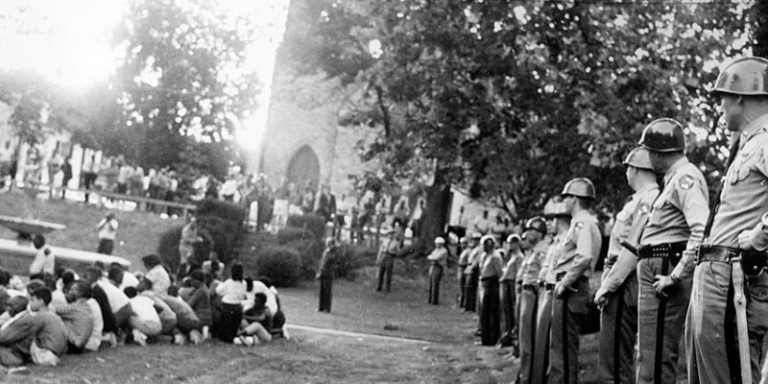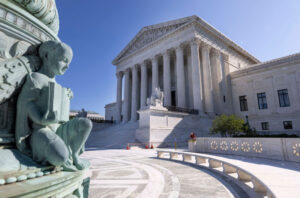Separation of Church and State: Keeping Religion Free
The separation of church and state protects freedom of religion by keeping the government out of it.
By: Jose Backer | July 14, 2020 | 481 Words

Separation of Church and State (Photo by Afro American NewspapersGadoGetty Images)
Origins
In the 1600s, thousands of English Puritans arrived in the New England region to escape religious persecution. The Puritans were mostly religious refugees and sought to practice their form of religion, which was different from that of the Church of England. More than a century later, Thomas Jefferson argued that the only way to guarantee the freedom of religion was to separate it from legislative governance altogether.
The separation of church and state was unofficially created as part of the First Amendment. When the First Amendment was ratified in 1791, the religious protections granted did not apply on the state level. The state could still fund churches, blasphemy was forbidden with the risk of imprisonment, and politicians in many states still had to say they believed in God. Yet the idea of the separation of powers on the state level wouldn’t be applied until the adoption of the 14th Amendment.
Legal Debates

(Photo by Kevin Dietsch/Getty Images)
There have been many legal battles over the validity of religious beliefs concerning the public good and civil rights in general. Reynolds v. United States (1879)was an appeal filed by George Reynolds, a Mormon, who argued that his religious beliefs were being infringed upon by the state of Utah when he was prosecuted for the practice of polygamy, the marriage of multiple spouses. Reynolds would ultimately be found guilty. The Supreme Court decided that the government cannot regulate belief, but it can punish people who break the law.
Torcaso v. Watkins (1961) was a Supreme Court case that stopped the use of religious tests for public office on the state and federal level. Until that point, Maryland’s Constitution required the people to say they believed in God to hold office in the state. Engel v. Vitale (1962) stopped states from making students pray in school. Most recently, the Supreme Court ruled in Espinoza v. Montana Department of Revenue (2020) that states could give tax money to some religious private schools.
It can be argued that the boundaries of this tenet vary with the political beliefs of the time, and especially with the political leaning of the Supreme Court.
Overview
From the different cases listed, it’s clear that the separation of church and state has been debated in every aspect of American life. From schools, marriage, state funding, and even religious practice, the separation of church and state is one part of our democracy that is always evolving. The Puritans and pilgrims first came to North America to escape persecution from the Church of England but, ironically, often punished members of their communities for not sharing their beliefs. Our founding fathers made clear that religious freedom was a necessity. The only way religious freedom could be protected was through the separation of church and state as a protection from the tyranny of the majority – our own democracy.
















